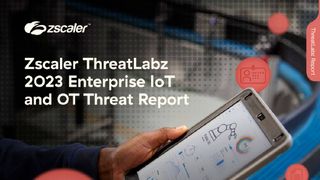HPE partners with AMD for El Capitan nuclear weapons supercomputer
The system, set to protect the US nuclear stockpile, will boast performance greater than two exaflops

HPE has recruited chipmaker AMD to build components for a staggeringly high-performance supercomputer system that’s being designed to support and maintain the security of the US nuclear stockpile.
El Capitan, which is expected to be activated in 2023, will use AMD’s CPUs and GPUs to reach two exaflops of power, which HPE claims is more powerful than today’s 200 most powerful supercomputers combined.
The system, powered by HPE subsidiary Cray’s Shasta architecture, has been commissioned by the US Department of Energy to service the National Nuclear Security Administration (NNSA).
El Capitan will be used by three NNSA national laboratories to enable advanced simulation and modelling to support the nuclear stockpile.
“As an industry and as a nation, we have achieved a major milestone in computing,” said HPE’s senior VP and GM for HPC and mission critical solutions (MCS), Peter Ungaro.
“HPE is honoured to support the U.S. Department of Energy and Lawrence Livermore National Laboratory in a critical strategic mission to advance the United States’ position in security and defense.
“The computing power and capabilities of this system represent a new era of innovation that will unlock solutions to society’s most complex issues and answer questions we never thought were possible.”
Get the ITPro. daily newsletter
Receive our latest news, industry updates, featured resources and more. Sign up today to receive our FREE report on AI cyber crime & security - newly updated for 2024.
The supercomputer will undergo complex and time-consuming 3D exploratory simulations for NNSA missions that today’s most powerful machines aren’t currently able to perform.
It’ll also give researchers the opportunity to explore a host of new applications for data-intensive workloads, from simulation to analytics, as well as using AI to support future missions.
As per the partnership, AMD will contribute its EPYC processors, dubbed ‘Genoa’, which features the Zen 4 processor core, as well as its next-generation AMD Radeon Instinct GPUs, based on a new architecture.
El Captian will also be fitted with the 3rd-gen AMD Infinity Architecture, which will provide high-bandwidth and low-latency connections between the CPUs and GPUs.
The announcement follows HPE’s acquisition of supercomputing behemoth Cray last year, with the company seeking to reach further into the enterprise hardware market.

Keumars Afifi-Sabet is a writer and editor that specialises in public sector, cyber security, and cloud computing. He first joined ITPro as a staff writer in April 2018 and eventually became its Features Editor. Although a regular contributor to other tech sites in the past, these days you will find Keumars on LiveScience, where he runs its Technology section.




